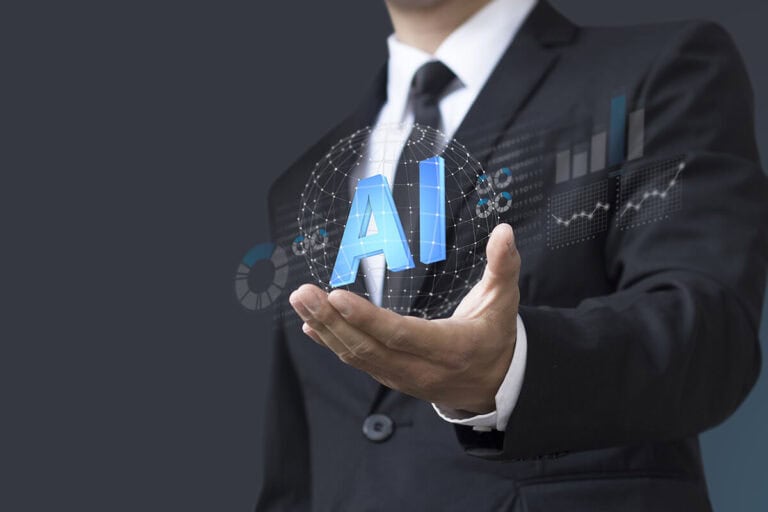Financial planning and analysis (FP&A) teams often deal with massive datasets, covering millions of data points across an organization. However, utilizing this data effectively is challenging, especially when one only relies on humans to work on it.
Table of Contents
ToggleIDC predicts that by 2025, the global datasphere will balloon to 175 zettabytes from 33 zettabytes in 2018.
Finance leaders may find it challenging to pick out precise patterns and trends from this vast amount of data. With limited context and data integrity, it is challenging for finance teams to tell a story.
In this age of digitization, the expansion of the global datasphere is never-ending. Since data is at the core of digital transformation, FP&A needs to leverage technologies like AI to make their processes more efficient and create new sources of competitive advantage.
AI has the potential to drive automation into businesses and feed processes and engagements to deliver new levels of efficiency.
This post will throw light on the top AI capabilities in use for financial reporting and their roles in today’s fast-moving, complex business environment. Let’s get started.
Why Does AI Rule FP&A?
As mentioned earlier, FP&A teams deal with huge company-wide datasets. They need to aggregate, categorize, and summarize the data to make it more manageable. AI-powered applications can instantly parse through huge amounts of data to spot errors and alert the user, significantly improving predictions and forecasts.
Further, AI helps FP&A in the following ways.
- It Makes Smarter FP&A Teams
AI can speed up tedious and lengthy tasks, allowing FP&A teams to focus on investigating potential opportunities. That way teams spend less time searching for errors or locating trends and more time making intelligent recommendations and decisions.
- It Improves FP&A Predictions
Data allows FP&A professionals to make predictions and forecasts. However, these predictions can be more accurate and quicker with AI, and AI empowers them to consider more variables and internal/external influences.
Forecasters work with vast amounts of data, but they are often unaware of the mistakes or errors hidden in the dataset. AI applications quickly spot such anomalies and instill confidence in planners and forecasters, allowing them to build accurate, meaningful forecasts.
- It Drives Collaboration and Innovation
During the pandemic, most teams have been forced to operate remotely for months on end. Hence, collaboration has become critical.
A lot of knowledge transfer happens during watercooler conversations. AI fills the gap by factoring in drivers like time, seasonalities, performance, or region, with the financial insights often held by the people on FP&A teams. This allows teams to follow documented strategies and decisions, model novel scenarios, and solve unique challenges.
- It Makes FP&A Tech Usable
AI applications can understand what FP&A analysts and teams want to accomplish and guide them in the process. This hugely simplifies complex data analysis and modeling. Further, they can keep an eye out for anomalies and patterns, thereby offering suitable business context.
Thus, AI makes FP&A faster, more agile, highly efficient, and smarter.
Top AI Capabilities for Intelligent FP&A Solutions
- Trend Analysis
Trend analysis is all about assessing data for a given period. This is the first AI capability that has become a part of the “predictive analytics” toolkit. It uses human interaction and AI to query data, identify trends, and test assumptions.
So, FP&A analysts can use trending to detect patterns in the data of a single variable over time to generate time-based formulae that fit the series. This can then be used to derive further series along with a degree of confidence related to the accuracy of the predicted numbers.
- Correlation Analysis
Correlation is a statistical measure of the relationship between two variables. It recognizes that all variables, whether actions or assumptions about a business environment, are influenced by other measures.
Over the past decade, we’ve seen a deluge of data collection. But FP&A teams find it challenging to scale their analytics capabilities without the help of automation.
Hence, AI is being increasingly applied to automate processes like pattern and anomaly detection, which is a natural step in correlation analysis. This helps teams quickly determine how one variable move or changes with the other variable. Further, it gives them an idea about the relationship between the two variables.
- Neural Networks for Higher Forecast Accuracy
FP&A is non-linear, and stock price data may seem random at times. The traditional time series methods like the ARIMA model are effective only when the series is stationary, and this isn’t possible in a live trading system.
That’s where neural networks come into the picture. These networks do not need stationarity, and by nature, they effectively determine the relationship between data and use it to predict new data.
Further, artificial neural networks have a huge potential to increase forecast accuracy. In fact, these networks can offer far higher accuracy compared to the traditional methods.
- Data Models
Previously, the above-mentioned AI capabilities needed data to be stored in some form of model that had a defined structure involving a series of relational database tables, a multidimensional database, or both. Today, we have tables with defined fields and records that do not require data to be kept in a predefined model.
Though we’re still in the early days of using this technology for FP&A, it promises to speed up analysis in the coming year. Advancement in AI is introducing sophisticated ML algorithms like decision trees and neural networks that are helping teams to solve the issues they face.
- Automated Management Processes
AI is helping FP&A to create effective and efficient workflows for their organization. The technology helps adapt and withstand the ever-changing business environment and automate the repeated processes, thus improving work efficiency.
For instance, robotic process automation (RPA) is empowered by machine learning and AI and helps FP&A teams manage a large volume of redundant processes that otherwise need a dedicated human workforce. AI-embedded automation management processes are allowing FP&A analysts to overcome performance bottlenecks and improve the quality and efficiency of the operations.
Summing Up
FP&A teams need to handle an abundance of data. This task is becoming increasingly tough for humans to manage effectively and without committing mistakes. Plus, humans cannot be expected to spot all the patterns, trends, abnormalities, and inconsistencies across millions of data points.
That’s where AI is pitching in. AI applications are offering FP&A professionals a competitive advantage. We are sure the information shared above on this subject will help you apply AI to improve your FP&A processes.




